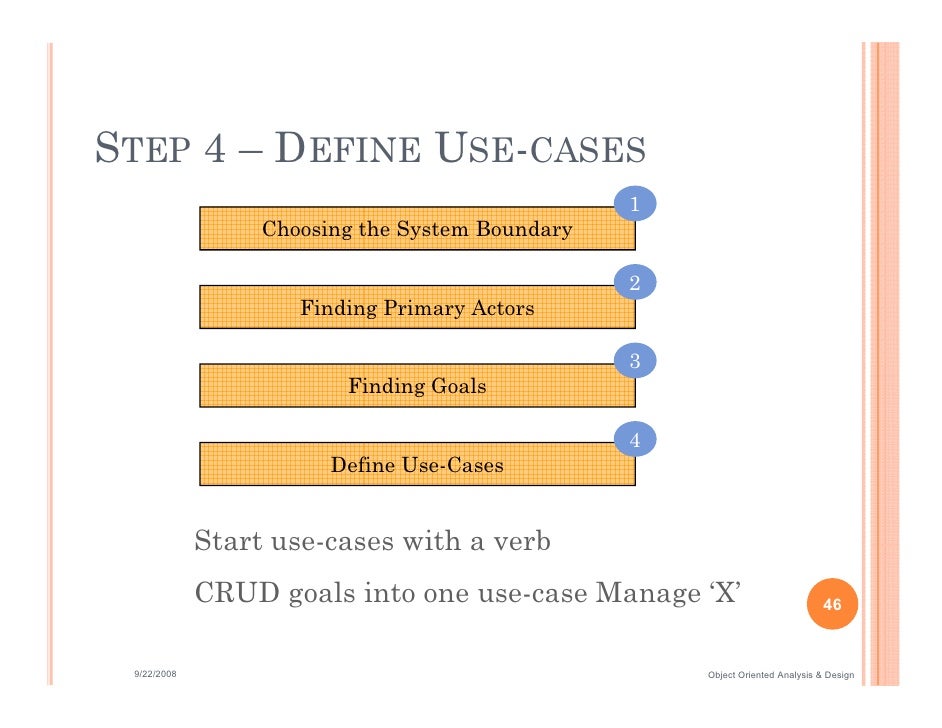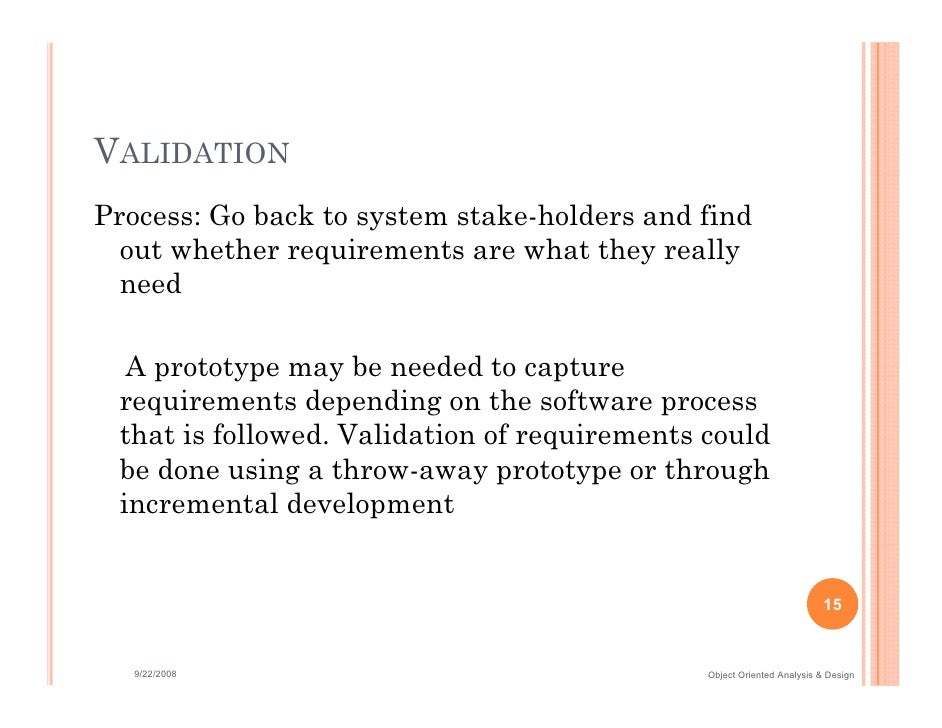Get this from a library! Writing effective use cases. Alistair Cockburn - This guide will help readers learn how to employ the significant power of use cases to their software development efforts. It provides a practical methodology, presenting key use case concepts.
- Develop and implement effective SOPs. The material is designed for use by managers and supervisors in all types and sizes of fire departments. Community officials, employee representatives, individual firefighters, and others with an interest in enhancing fire service opera tions and administration can also benefit from this infor-mation.
- Click here to download the use case templatewrite a use case.
This may be a lot of review for seasoned use case writers, but for those of you who are not as familiar with this requirements model, here are some best practices to consider. I assume you already know what a use case is, why you would want to use them, and the components that make up a proper use case. I’ve included some helpful links at the bottom of the post for more information.
Use a Template
A bit of a no-brainer, but I’m surprised at how many different use cases I see across projects at the same company (or even within the same project). Templates make your job easier, but even more importantly they make it easier for your readers.
Make Pre & Post Conditions Verifiable
Pre and Post Conditions should be written as testable statements. “User has logged in” is much clearer than “Log in”. Also – if you have multiple conditions, they should be separated with an And or Or, as appropriate.
Adhere to Consistent Writing Standards
This is particularly important if multiple people are writing use cases on the same project – they should all use the same writing format, style, sentence structure, etc… Consider the following:
Writing Effective Use Cases Torrent Free
- Single statement per line
- Always have a subject – “User” or “System”
- Be concise – remember, use cases are not end requirements – you should be demonstrating the interaction between the system and user, but not detailed specifications
- Use an active voice
Do Not Include Design
Many use cases become less effective (or even un-readable) because the author attempts to put everything they can in the use case. Detailed specifications – particularly design elements such as button names – should not be in use cases unless there is a very good reason (and usually there is not).
Use an Appropriate Level of Detail
I can suggest some guidelines, but you will have to find what the “right” level of detail is for your own situations. Keep in mind these suggestions:
- Generally, use cases should be 10-15 steps in length
- If you find yourself repeating the same set of steps on multiple use cases, consider separating them out into their own use case
- If you have a use case with just a handful of steps, consider folding it into another use case(s)
- If you have many use cases that have essentially the same set of steps, make sure you are not writing different use cases for scenarios that describe the same interaction (e.g. if you have a use case for Purchase Music CD and Purchase DVD and they describe the same interactions, then you probably are capturing scenarios instead of unique use cases)
More Reading on Use Cases
Check out the following for more information:
About bkuhn
When we talk about writing use cases, we’re usually talking about writing its main success scenario – the most important part. It describes the interaction as the actor completes the use case's objective. Here are five ways to write a solid main success scenario:
1. Make each step show an action
A use case is a story. Stories that don’t move forward are boring (and hard to read). So, each step in the use case should show some progress towards the eventual goal.
While each step is unique, you'll really only write five kinds of steps:
- The actor provides information
- The actor provides information
- The actor makes a choice
- The system provides information
- The system asks for information
- The system does some work
Each steps should show what the actor does or gets. Making each step an action will keep your use case lively and readable.
2. Keep it between six and ten steps

When a use case is 6-10 steps long, your reader can absorb and understand it in a minute or two.

If it's much longer, it will be harder to understand. It’s commonly said that we humans can keep only 5-9 items in our short term memory. If your use case is much longer than 10 steps, reconsider the goal of the use case. Ask yourself how the actor completes that goal and see if you can break it in two.
If a use case is much shorter than 6 steps, it's probably too fine grained and the reader won't see the bigger picture. You’ll end up with a large number of small use cases, which is harder to manage. Ask yourself why the actor is completing the use case to find the higher-level goal.

3. Avoid if statements
When writing a step that describes your system checking something, you might be tempted to use an if statement:
Don't do this. You'll probably need an else statement to go along with that if statement. The system you're working on is probably complex. So you won't be able to capture all of its complexities with a single if statement. You might need to nest another if statement inside of that first one. Before you know it, you'll be trying to code your system with a use case. That won't work.
Instead, write validation steps in the affirmative. Use verbs like validate and verify.
This moves the use case forward in when everything is going right. You might ask, “What if the credit score isn’t valid?” The proper way to capture those alternate cases is with an extension. We'll cover those later.
4. Forget the UI (for now)
When writing use case steps, exclude details about button clicks, text boxes, checkboxes, etc. Don't get hung up on describing the user interface. This will slow you down and have you updating your use case for every minor UI tweak. A screen mockup or wireframe is a great place to describe a user interface. A use case’s main success scenario is not.
Writing Effective Use Cases Torrent Pirate Bay
Here’s an example of what NOT to do:
- The customer enters a routing number into the routing number textbox.
- The customer enters an account number into the account number textbox.
- The customer clicks the Add Payment Account button.
- The system shows a calendar with available payment dates.
Instead, describe the intent of what happens in the step. Is the system showing something important? Is the system prompting for an answer? Is the user making a selection? Write it in a way that frees you from the UI. After you’ve captured this flow, you can then define and refine the UI again and again without having to update the use case.
Rewriting the steps above, but focusing on intent might result in something like this:
- The customer enters the payment account information.
- The system shows possible payment dates.
- The customer selects a payment date.
These steps will require much less maintenance as we finalize the user interface.
Writing Effective Use Cases Torrents
5. Put formulas and rules elsewhere
When writing use case steps, you'll encounter business rules, formulas, and other constraints that govern the behavior of your system. It's important to capture these things, but not right in the step of a use case. There are a few reasons for this:
- These rules, formulas, and constraints probably apply to more than one use case step.
- You'll want to define and maintain these in just one place.
- At some point, you'll want to see a list of these things on their own.
Writing Effective Use Cases Torrent Download
You would NOT want to write a use case step like this:
Instead, write something like:
And then maintain the description of a valid recurring payment date as a separate business rule. So go ahead and maintain a list of business rules, data definitions, and the like. But do it outside of your use cases.
Next time, we’ll cover how to handle alternate or exceptional behavior (e.g. if statements) in your use cases.